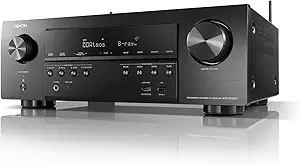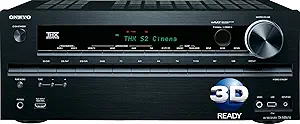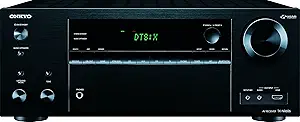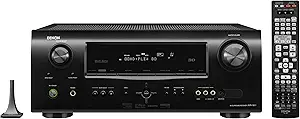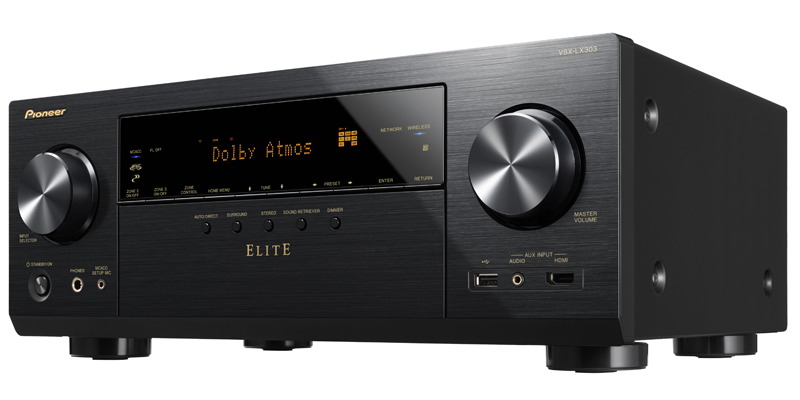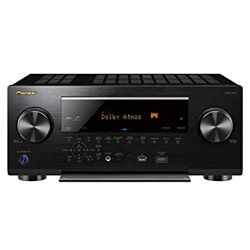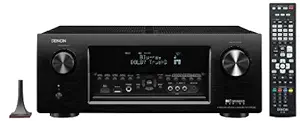Marantz NR1608 VS
Onkyo TX-NR686

- Brand - Marantz
- Updated_at - 2023-12-18 19:07:23
- USB - 1
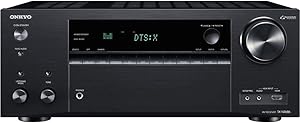
- Brand - Onkyo
- Updated_at - 2024-02-02 04:42:59
- USB - 1
Pros & Cons
Marantz NR1608
VSPros
- The Ideal autocalibration of the speakers for acoustic conditions of the particular room.
- The device allows watching a movie in the main room and listening to the music in another one due to the Multi-Room function.
- You can pre-out the mains to an external amplifier.
Cons
- The only HDMI output 7x50W power plant fits better the smaller spaces.
- No clear manual instructions, only online.
Onkyo TX-NR686
VSPros
- Clear and organized menu.
- Produces a good and loud volume from quite demanding speakers.
- The model offers dual-zone capability and bi-amplifying, which enables users to create several zones while using several amplifiers.
- Easy to install, setup and use. The zone 2 can be controlled easily via a remote controller.
- The output sound is crisp and pure.
- The instruments sound clearly distinguished with a very clear position in the area.
Cons
- The streaming services that require premium subscriptions are not listed.
- Bluetooth devices glitched short blank spaces during music playback.
- Firmware update doesn’t notify about new available FW that makes the listeners select the option Update FW manually in order to check for a newer FW.
Specifications
Groups
| Specification | Marantz NR1608 | Onkyo TX-NR686 |
|---|---|---|
| Built-in Decoders | ||
| Dolby Digital Plus | ||
| Dolby Atmos | ||
| Dts:x | ||
| Dolby True Hd | ||
| Dolby Surround | ||
| Connectivity Interfaces | ||
| Ieee 802.3u | ||
| Ieee 802.3 | ||
| Wi-fi | ||
| Bluetooth | ||
| Connector Type | ||
| Hdmi Inputs | 8 | 7 |
| Coaxial Digital Inputs | 1 | 1 |
| Optical Digital Inputs | 1 | 2 |
| Phones | 1 | 1 |
| Av Inputs | 2 | 7 |
| Usb | 1 | 1 |
| Subwoofer Outputs | 2 | 2 |
| Coaxial Digital Outputs | has not | has not |
| Optical Digital Outputs | has not | has not |
| Hdmi Outputs | 1 | 2 |
| Media Content Source | ||
| Network | ||
| Bluetooth | ||
| Usb-host | ||
| Additional Features | ||
| Apple Air-play Support | ||
| Advanced Sound Retriever (asr) Technology | ||
| Three-zone Capability | ||
| Smartphone Remote Control | ||
| A-b Speaker Switch | ||
| Dual-zone Capability | ||
| Pure Direct Mode | ||
| Auto Power Off | ||
| Bi-amplifying | ||
| Audio Return Channel (arc) | ||
| Amplifier | ||
| Output Power Per Channel | 50 W | 160 W |
| Total Output Power | 350 W | 800 W |
| Total Harmonic Distortion | 0.08 % | 0.08 % |
| Frequency Response | 20 Hz-20 kHz | 20 Hz-20 kHz |
| Output Impedance Per Channel | 4 Ohm | 8 Ohm |
| Sound Features | ||
| Surround Sound Effects | Dolby Surround | Theater-Dimensional Virtual Surround |
| Audio D/a Converter | 32bit / 192kHz | 32bit / 384kHz |
| Digital Content Protection | HDCP 2.2 | HDCP 2.2 |
| Surround System Class | 7.2 channel | 7.2 channel |
| Audio Formats | ||
| Aiff | ||
| Aac | ||
| Wma | ||
| Wav | ||
| Mp3 | ||
| Flac | ||
| Apple Lossless | ||
| Dimensions | ||
| Dimensions | 14.8 x 17.3 x 4.1 inches | 14.9 x 17.1 x 6.8 inches |
| Functions | ||
| Network Audio Player | ||
| Internet Radio | ||
| Digital Player | ||
| Power Device | ||
| Standby Power Consumption | 0.2 W | 0.15 W |
| Operational Power Consumption | 250 W | 570 W |
| Built-in Display | ||
| Colour | black | black |
| Type | fluorescent | fluorescent |
| Signal Processing | ||
| Upscaling Via Hdmi | up to 4K | up to 4K |
| 3d Pass-through | ||
| Video Conversion/scaling | HDMI to HDMI scaling, analog to HDMI up conversion | HDMI to HDMI scaling, analog to HDMI up conversion |
| Hdmi Pass-through | up to 4K | up to 4K |
| Radio | ||
| Preset Station | 40 | 40 |
| Tuner Bands | AM/FM | AM/FM |
| Tuner Type | digital | digital |
| Clock | ||
| Sleep Timer | ||
| Built-in Clock | ||
| General | ||
| Brand | Marantz | Onkyo |

